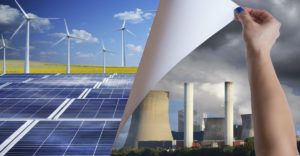Page Contents
Advertiser Disclosure: At ElectricityRates.com, our number one goal is to help you make better energy decisions. We adhere to strict editorial guidelines, however this post may include references to products offered from our partners.
May 24, 2013
Michigan's Consumers Energy customers will see higher electricity rates on next month's bill. The average residential electric user's bill will increase by about 2.3 percent or about $1.67. This is in addition to the rate increase that took into effect last month.
The Michigan Public Service Commission (MPSC) approved $89 million of the $110 million that Consumers Energy requested. In March, the utility self-implemented the expected $110 million increase through increasing rates on customers. The MPSC has ordered Consumers Energy to refund roughly $21 million plus interest to its electric customers. Residential customers are not likely to see a refund, but industrial and commercial customers should. The utility has less than 60 days to file a reconciliation application to the MPSC about the refund. No dates have been set for when these refunds will go out.
Fitch Ratings, a sophisticated global rating agency based in New York and London, expects that Consumers Energy will continue to file for rate increases annually in the coming years. Most of these increases will be due high levels of capital investment, including construction of natural gas-fired plant and other improvements and investments that are likely to total to $7 billion over the next five years.
How Consumers Energy Calculates Electric Rates
The MSPC oversees all public utilities in Michigan and exists to ensure that customers are not being charged more than is required for a substantial rate of return (ROR) on their investments. Currently, this ROR is around 10 percent.
Rates are essentially determined by Consumers Energy's cost of doing business. As these costs changes, Consumers Energy files a request with the MPSC for approval. Electric charges are broken into two components: Power Supply Charges and Delivery Service. Delivery service covers the costs of major capital investments, such as infrastructure (electric facilities, poles, wires, and pipelines) as well as environmental upgrades and day-to-day operating costs. The recent rate hike request is associated with delivery service.
Supply charges, on the other hand, are associated with the actual supply of electricity, and are determined by what Consumers Energy pays for the electric supply. The utility is not allowed to profit off the sale of electric supply, and can only profit from delivery services.
Shop for Lower Electric Supply Rates
Some Consumers Energy customers can shop around for their electric supply by comparing the rates of retail electricity providers available in the area. If you're a small business owner or a resident, use the Compare & Switch tool at the top of this page to compare providers for free. If you are a business owner, you can fill out our online Business Electricity Rate form, and we'll reach out to our network of providers to find the best rates for your business. Both of these services are free.



